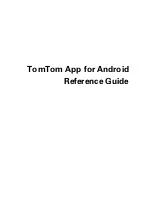
Chapter 2. Red Hat Update Agent
35
Note
Systems running Red Hat Enterprise Linux 2.1 need version 2.9.3-1 or higher of the
rhn_register
package. It is highly recommended you obtain the latest version before using activation keys.
Before using an activation key, you must first generate one through the RHN website. Refer to Section
4.4.7
Activation Keys
for precise steps.
To use an activation key, as root from a shell prompt on the system to be registered, run the
rhnreg_ks
command followed by the key. For example:
rhnreg_ks --activationkey=7202f3b7d218cf59b764f9f6e9fa281b
Systems running Red Hat Enterprise Linux 2.1 will use the
--serialnumber
instead of
--activationkey
, like so:
rhnreg_ks --serialnumber=7202f3b7d218cf59b764f9f6e9fa281b
This command performs all the actions of the
Red Hat Network Registration Client
and the regis-
tration function of the
Red Hat Update Agent
. Do not run either of these applications for registration
after running
rhnreg_ks
.
A System Profile, including software and hardware information, is created for the system and sent
to the RHN Servers along with the unique activation key. The system is registered with RHN under
the account used to generate the key, entitled to an RHN service offering, and subscribed to the RHN
channels and system groups selected during key generation. The system will not be subscribed to
channels that contain packages not suitable for the system. For example, a Red Hat Enterprise Linux
2.1 system cannot be subscribed to the Red Hat Enterprise Linux 3 channel.
The unique Digital Certificate for the system is generated on the system in
/etc/sysconfig/rhn/systemid
.
When using activation keys to assign channels, a couple of rules should be kept in mind:
•
A key may specify either zero or one base channel. If specified, it must be a custom base channel.
If not, the base channel corresponding to the system’s Red Hat distribution will be chosen. For
instance, you may not take a Red Hat Enterprise Linux 2.1 system and subscribe it to the Red Hat
Enterprise Linux 3 channel.
•
A key may specify any number of child channels. For each child channel, subscription is attempted.
If the child channel matches the system’s base channel, subscription succeeds. If it does not, the
subscription fails silently. Refer to Section 4.6
Channels
for more information.
•
Keys created by an Organization Administrator are available for modification and use by other
Organization Administrators within the organization. These permissions are set through the
Users
tab of the RHN website. Refer to Section 4.8
Users
for details.
•
Systems registered by activation keys are tied to the organization or overall account in which the
key was created, not the key itself. After registration, a key can be safely deleted without any affect
on the systems it was used to register.
Содержание NETWORK 3.3 - PROVISIONING
Страница 1: ...Red Hat Network 3 3 Provisioning Reference Guide...
Страница 6: ......
Страница 16: ...6 Chapter 1 What is Red Hat Network...
Страница 46: ...36 Chapter 2 Red Hat Update Agent...
Страница 50: ...40 Chapter 3 Red Hat Network Alert Notification Tool...
Страница 108: ...98 Chapter 6 Red Hat Network Registration Client...
Страница 116: ...106 Appendix A Command Line Config Management Tools...
Страница 120: ...110 Appendix B RHN API Access...
Страница 126: ...116 Glossary...
















































